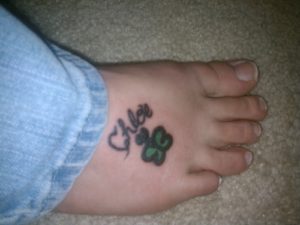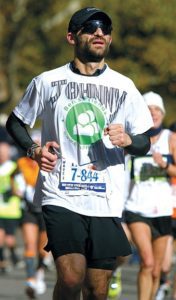OUTLINE
SUMMARY
BensFriends.org is an international mission-driven company dedicated to providing safe, supportive online communities for people affected by rare diseases. Founded by Ben Munoz after a 2006 stroke at age 29, BensFriends.org has a network of patient-to-patient communities helping tens of thousands of people worldwide. For more information, visit www.bensfriends.org.
BACKGROUND
Ben created our first patient community so that he could find someone to connect with while recovering from a stroke. He and Scott realized what an impact a compassionate community could make in the life of a patient and began creating more patient communities for people with other rare diseases. Ben was formerly a software developer at eToys and IVT. Ben is a graduate of Stanford University and Kellogg School of Management. Email Ben at ben@bensfriends.org.
STATS
- 44 Support Group Communities (15 communities with more than 1000 members)
- 153 Moderators from around the globe volunteer their time to support and help out
- 79,000+ members (more than 100% growth from 2013 to 2022)
- 20,000+ uniques/month (Google Analytics)
- 100,000+ page views/month (Google Analytics)
- Still 6,000+ rare diseases
- Still 300 million people around the world affected by rare diseases (Nearly 1 in 20 people!)
BENSFRIENDS.ORG PROFILE & TIMELINE
Mission
To ensure that everyone in the world with a rare disease has a safe place to go and connect with others like them.
Core Value
Positively impact our members’ lives everyday.
Model
BensFriends.org is bootstrapped and fully supported by donors, sponsors, and advertisers. An army of volunteers help out, no one profits, and all donations go directly to funding the networks.
Timeline
2006
-
- Ben Munoz suffers serious stroke caused by rare condition called an AVM.
- During recovery he’s alone & unable to find a support group of AVM stroke survivors.
2007
-
- So Ben creates avmsurvivors.org to ensure others with an AVM don’t suffer alone.
- Dozens of people join in the first 2 months to find care, support, and friends.
2008
-
- Hundreds more join and express gratitude.
- Ben’s grad school classmate and good friend Scott Orn sees power of Ben’s online support community and they create #2: livingwithtn.org and #3: livingwithataxia.org
- BensFriends.org is formed encompassing all of the rare disease communities.
2009
-
- AVMSurvivors.org passes 1,000 members.
- Ben and Scott launch #4: www.aldsupport.org
2010
-
- New friends join team to help Ben achieve his mission, launch new communities, raise $.
- Blog launched (blog.bensfriends.org) with amazing thank yous, stories, and updates.
- BensFriends.org passes 20 communities & 7,000 total members.
2011
-
- BensFriends.org featured in or partners with Seth Godin’s book Tales of the Revolution, NPR, Extole, Pay It Forward, Brown Alumni Mag, Disability Digest, and more.
- BensFriends.org reaches 25 communities & passes 14,000 members.
2012
-
- Partnered with Advocacy for Patients with Chronic Illness (free legal), Friends of Treasure (patient financial assistance), RareDiseaseDay.org (global awareness).
- BensFriends.org passed 30 communities and 25,000 members.
2013
- Launched mobile app & e-book; featured in TechCrunch, Houston Chron, Harvard BR.
- Partnered with 2nd.MD (2nd opinions), Rare Disease UK, Rare Genomics, Patient Power…
- More than 37,500 members across 35 communities (plus many more groups).
2014
-
- Nearly 46,000 members
- Ben is featured in Forbes Magazine
- Receives “LinkedIn for Good and Nonprofit Innovation Grant”
2015
-
- More than 54,000, with 11 communities having more than 1k members each
- Ben’s Friends was awarded with Yahoo Employee Foundation grant for Project Platform
2016
-
- Ben’s Friends is fully migrated off of Ning and the communities are humming on Discourse
2017
-
- Ben’s Friends launched seven more patient support communities and had reached more than 68,000 members and more than 300,000 page views.
2018
-
- Five more patient support communities had been launched – Living with Raynaud’s Disease, Living with Sarcoidosis, Living with Chronic Pelvic Pain, Living with Epidermolysis Bullosa, Living with Dysautonomia.
2019
-
- Living with Idiopathic Pulmonary Fibrosis was launched
2020
-
- Ben’s Friends launched online training facility Ben’s Friends U.
- We have redecorated our communities. It features a cleaner and simpler look!
- Our Living with PsA community turned 10 this year. As a way of celebrating, our moderators shared some memorable and heartfelt messages.
2021
-
- Acute Disseminated Encephalomyelitis marks its 10th year anniversary
STORIES & TESTIMONIALS
Race car – AVMSurvivors.org member, Michael Hunt, painted his racecar with our logo!
Tattoos – We’ve had at least 2 members get tattoos with one of our logos! How’s that for loving a brand and what we do!?
Fundraising – John Stamler, moderator of ASDSurvivors.org and LivingWithVWD.org, raised over $7,000 for BensFriends.org while running the NYC marathon 6 months after open heart surgery.
Saving a life – Anna (from Sweden) reached out to/for her friend in across the globe preventing her from committing suicide (livingwithtn.org).
And these are just a few of the amazing stories we hear about nearly every single day.
Testimonials
I have to say I received so much love from you guys just in the first day I found this site. – Evett
This site is incredible. I can see how many lives have been touched. Being able to connect to people all over the world who suffer from AVM is so important. It reaffirms that while it can be agonizing to battle AVM, we don’t have to do it alone. Hope is out there. Thank you so much! – Melanie
Thank you for setting this wonderful site up. I truly feel a part of a wonderful family. – Chris
I felt so alone when I was going through my major surgeries. This is a wonderful place you have created to bring people together with this rare condition. Thanks again and wishing you the best. – Sandi
Thanks Ben. You and your friends created a WONDERFUL website. Friendly, caring folks who want to help each other – that’s what a support group is all about! – Patti
We are proud to say in the past year and a half, our community, which is free to all members, has grown to 2,000 members. With deep gratitude, we want to thank Ben for his vision, which has allowed the creation of many other support communities for those affected by rare conditions. – The Brain Aneurysm Foundation Support Community
COMMUNITIES (GLOSSARY)
BensFriends.org Communities (with what system it affects) – and a description
Acute Disseminated Encephalomyelitis (ADEM, Immunological System) – An immune mediated disease of the brain that usually occurs following a viral infection but may appear following vaccination, bacterial or parasitic infection, or even appear spontaneously.
ADHD – Attention deficit hyperactivity disorder (ADHD, or AD/HD or ADD) is a developmental disorder. It is primarily characterized by “the co-existence of attentional problems and hyperactivity, with each behavior occurring infrequently alone” and symptoms starting before seven years of age.
Adrenoleukodystrophy (ALD; Nervous System, Endocrine System) – Adrenoleukodystrophy describes several closely related inherited disorders that disrupt the breakdown (metabolism) of certain fats (very-long-chain fatty acids).
Amyloidosis – Amyloidosis is a disease that occurs when substances called amyloid proteins build up in your organs. Amyloid is an abnormal protein usually produced by cells in your bone marrow that can be deposited in any tissue or organ. Amyloidosis is rare, and the exact cause is often unknown. Treatments are available to help you manage your symptoms of amyloidosis.
Arteriovenous Malformation (AVM; Circulatory System) – AVMs are defects of the circulatory system that are generally believed to arise during embryonic or fetal development or soon after birth. Although AVMs can develop in many different sites, those located in the brain or spinal cord can have especially widespread effects on the body.
Ataxia (Nervous System) – People with ataxia have problems with coordination because parts of the nervous system that control movement and balance are affected. Ataxia may affect the fingers, hands, arms, legs, body, speech, and eye movements. The word ataxia is often used to describe a symptom of uncoordination which can be associated with infections, injuries, other diseases, or degenerative changes in the central nervous system. Ataxia is also used to denote a group of specific degenerative diseases of the nervous system called the hereditary and sporadic ataxias which are the National Ataxia Foundation’s primary emphases.
Atrial Septal Defect (ASD; Circulatory System) – Atrial septal defect (ASD) is a congenital heart defect in which the wall that separates the upper heart chambers (atria) does not close completely. Congenital means the defect is present at birth.
Brain Aneurysms (Nervous System) – A brain aneurysm (AN-u-rizm) is a bulge or ballooning in a blood vessel in the brain. It often looks like a berry hanging on a stem.
Charcot Marie Tooth (Nervous System) – Charcot-Marie-Tooth disease is a group of inherited disorders that affect the peripheral nerves (those outside the brain and spine).
Chiari Malformation (Nervous System) – Chiari malformations (CMs) are structural defects in the cerebellum, the part of the brain that controls balance.
Chronic inflammatory demyelinating polyneuropathy (Nervous System) – CIDP is a neurological disorder characterized by progressive weakness and impaired sensory function in the legs and arms.
Chronic Pelvic Pain (CPP) – is a disabling disease that causes distress as the quality of life of CPP patients s vastly diminished. CPP has been found to be correlated with central sensitization, painful bladder syndrome, irritable bowel syndrome, endometriosis and adhesions. As such, in the evaluation of patients, it is imperative to take a comprehensive patient history. Performing physical examinations and ultrasound imaging is of particular value to elucidate the etiology of pain. As CPP patients are at risk for psychological disorders, psychological assessments are critical to diagnose associated psychological disorders and to take these into account in planning a treatment plan for patients.
Dysautonomia is an umbrella term used to describe several different medical conditions that cause a malfunction of the Autonomic Nervous System. The Autonomic Nervous System controls the “automatic” functions of the body that we do not consciously think about, such as heart rate, blood pressure, digestion, dilation and constriction of the pupils of the eye, kidney function, and temperature control. Included conditions are Postural Orthostatic Tachycardia Syndrome (POTS), Neurocardiogenic Syncope (NCS), and Multiple System Atrophy (MSA).
Eagle Syndrome (Musculo-Skeletal) – Eagle Syndrome is a condition where elongated facial bone (temporal styloid process) (more than 30mm) is in conflict with the adjacent anatomical structures.
Epidermolysis Bullosa (ep-i-der-mo-lie-sis bu-low-suh), or EB, is a rare genetic connective tissue disorder that affects 1 out of every 20,000 births in the United States (approximately 200 children a year are born with EB). There is no treatment or cure. There are many genetic and symptomatic variations of EB, but all share the prominent symptom of extremely fragile skin that blisters and tears from minor friction or trauma. Internal organs and bodily systems can also be seriously affected by the disease. Daily wound care, pain management, and protective bandaging are the only options available for people with EB.
Erythromelalgia (also known as Mitchell’s disease, acromelalgia, red neuralgia, or erythermalgia) – Erythromelalgia is a rare neurovascular peripheral pain disorder in which blood vessels, usually in the lower extremities (or hands), are episodically blocked (frequently on and off daily), then become hyperemic and inflamed.
Fibromyalgia (Nervous, Immunological, Endocrine) – Fibromyalgia is a syndrome in which people experience long-term, body-wide pain and tender points in joints, muscles, tendons, and other soft tissues.
Glossopharyngeal Neuralgia (GPN; Nervous System) – Glossopharyngeal neuralgia is a condition in which there are repeated episodes of severe pain in the tongue, throat, ear, and tonsils, which can last from a few seconds to a few minutes.
Idiopathic Pulmonary Fibrosis (IPF) is a type of lung disease that results in scarring (fibrosis) of the lungs for an unknown reason. Over time, the scarring gets worse and it becomes hard to take in a deep breath and the lungs cannot take in enough oxygen. Idiopathic pulmonary fibrosis is a form of interstitial lung disease, primarily involving the interstitium (the tissue and space around the air sacs of the lungs), and not directly affecting the airways or blood vessels.
Lupus (Immunological) – Systemic lupus erythematosus (SLE) is a chronic autoimmune disorder. SLE may affect the skin, joints, kidneys, and other organs.
Myeloma (Blood) – Multiple myeloma is a cancer that begins in plasma cells, a type of white blood cell. These cells are part of your immune system, which helps protect the body from germs and other harmful substances. In time, myeloma cells collect in the bone marrow and in the solid parts of bone.
Myositis (Immunological, Musculoskeletal) – Myositis is inflammation of your skeletal muscles, which are also called the voluntary muscles. These are the muscles you consciously control that help you move your body. An injury, infection or autoimmune disease can cause myositis.
Narcolepsy (Neurological) – Narcolepsy is a chronic sleep disorder, or dyssomnia, characterized by excessive sleepiness and sleep attacks at inappropriate times, such as while at work. People with narcolepsy often experience disturbed nocturnal sleep and an abnormal daytime sleep pattern, which often is confused with insomnia. Narcoleptics, when falling asleep, generally experience the REM stage of sleep within 5 minutes; whereas most people do not experience REM sleep until an hour or so later.
Nephrotic Syndrome may occur when the filtering units of the kidney are damaged. This damage allows protein normally kept in the plasma to leak into the urine in large amounts, which reduces the amount of protein in your blood. Since the protein in the blood helps keep fluid in the bloodstream, some of this fluid leaks out of the bloodstream into your tissues, causing swelling, called edema. The swelling may be most noticeable in your legs after you have been standing and around your eyes when you first get up in the morning. Eventually, the swelling in your legs may be there all the time, and it may also occur in other parts of your body. You may notice that your urine foams more than usual because of the amount of protein in it.
Primary Sclerosing Cholangitis (PSC; Digestive System, Immunological System) – Sclerosing cholangitis refers to swelling (inflammation), scarring, and destruction of the bile ducts inside and outside of the liver.
Psoriatic Arthritis (PsA; Immunological) – Psoriatic arthritis is an arthritis that is often associated with psoriasis of the skin.
Raynaud’s (ray-NOHZ) Disease causes some areas of your body — such as your fingers and toes — to feel numb and cold in response to cold temperatures or stress. In Raynaud’s disease, smaller arteries that supply blood to your skin narrow, limiting blood circulation to affected areas (vasospasm). Women are more likely than men to have Raynaud’s disease, also known as Raynaud or Raynaud’s phenomenon or syndrome.
Sarcoidosis is the growth of tiny collections of inflammatory cells (granulomas) in different parts of your body — most commonly the lungs, lymph nodes, eyes and skin. Doctors believe sarcoidosis results from the body’s immune system responding to an unknown substance, most likely something inhaled from
the air. There is no cure for sarcoidosis, but most people do very well with little or only modest treatment.
Sleep Disorders number around 88, but most sleep specialists spend much of their time treating the top five: insomnia, sleep apnea, narcolepsy, restless legs syndrome, and periodic limb movements. About one-third of the population has some form of insomnia at any given time, and 10% of that group has chronic insomnia. According to the National Sleep Foundation, a large majority (75%) of Americans say they’ve had at least one symptom of a sleep problem a few nights a week or more within the past year. Ben’s Friends sponsors a separate community for narcolepsy at Living with Narcolepsy.
Synovial Sarcoma (Immunological, Musculoskeletal) – Synovial sarcoma is a type of soft tissue sarcoma. Soft tissue sarcomas are cancers of the muscle, fat, fibrous tissue, blood vessels, or other supporting tissue of the body, including synovial tissue. Synovial tissue lines the cavities of joints, such as the knee or elbow, tendons (tissues that connect muscle to bone), and bursae (fluid-filled, cushioning sacs in the spaces between tendons, ligaments, and bones). Although synovial sarcoma does not have a clearly defined cause, genetic factors are believed to influence the development of this disease.
Traumatic brain injury (TBI), a form of acquired brain injury, occurs when a sudden trauma causes damage to the brain. TBI can result when the head suddenly and violently hits an object, or when an object pierces the skull and enters brain tissue.
Trigeminal Neuralgia (Nervous System, Musculo-Skeletal) – Trigeminal neuralgia is a nerve disorder that causes a stabbing or electric-shock-like pain in parts of the face.
Von Willebrand’s Disease (Blood) – Von Willebrand’s Disease is the most common hereditary bleeding disorder.
BENSFRIENDS.ORG CONTACT
Please email us at press@bensfriends.org with media inquiries. We look forward to working with you and helping people get support for their rare diseases!


